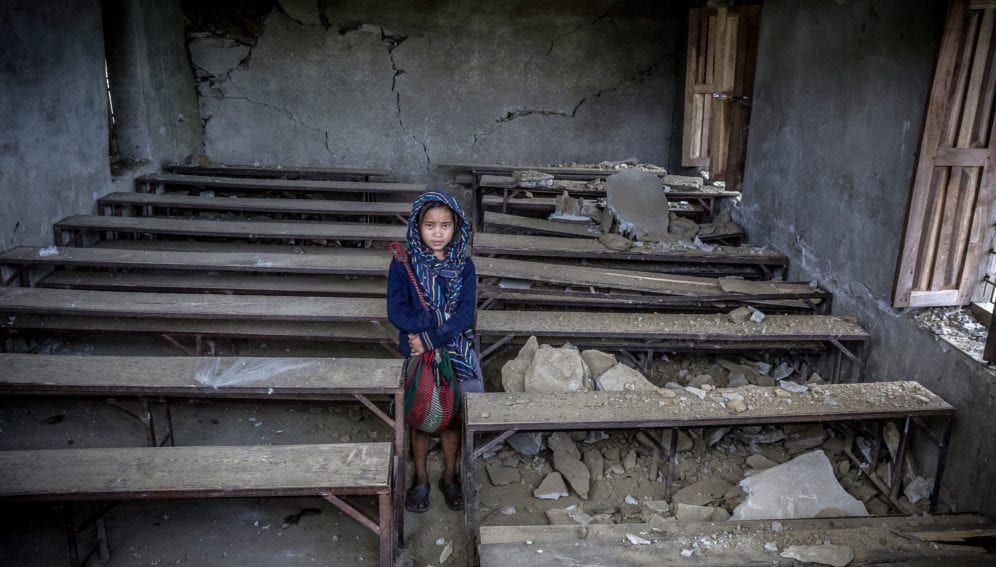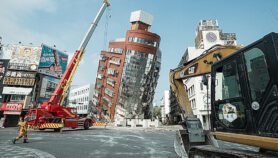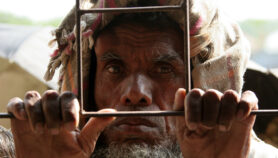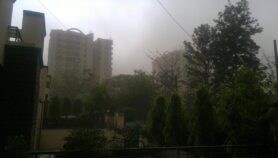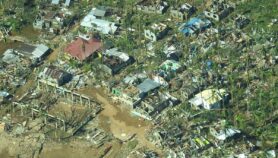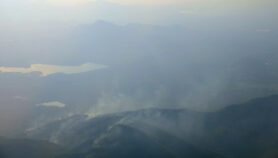Send to a friend
The details you provide on this page will not be used to send unsolicited email, and will not be sold to a 3rd party. See privacy policy.
As Nepal recovers from a 7.8 magnitude earthquake and numerous aftershocks it faces several short-term and long-term challenges, says Nalaka Gunawardene.
Providing medical care, temporary shelter and other survival needs have been the priority in the immediate aftermath of the 25 April temblor. Many local and international groups have been involved.
Next, the government and civil society confront the formidable tasks of restoring disrupted livelihoods and rebuilding more disaster resilient cities and villages. In doing so, Nepal has a chance to adopt some good disaster risk reduction (DRR) policies and strategies.
The Himalayan nation can embed the ‘build back better’ principle into rehabilitation and reconstruction, as advocated in the new framework for DRR adopted by representatives from 187 UN member States who meet in Sendai, Japan, in March. [1]
Speaking at the Third UN World Conference on DRR just three weeks before the earthquake, Nepali foreign minister Mahendra Bahadur Pandey described his country as one of the most vulnerable in the world to disasters. [2]
The earthquake killed more than 8,600 and injured over 19,000. Millions of people have been rendered homeless. There has also been considerable infrastructure damage. The government’s initial estimate put the cost of reconstruction at US$ 5 billion to 10 billion, spread over several years. [3]
Killer buildings
Besides public buildings and hotels, more than half-a-million houses have been damaged or destroyed. Most of these were houses with mud-mortar construction and occupied by the poor. This prompted Nepali editor and social activist Kanak Mani Dixit to call it “a very class-conscious earthquake”.
He wrote: “What was most significant about the Great Earthquake of 2015 was how it hit the poor of town and country, as well as the heritage sites. This seemed mainly because the quake’s peculiarity—in terms of duration, directionality, and depth of geological rupture—was to destroy buildings that used mud-mortar as binding agent.” [4]
In his view, a larger disaster was averted because the cement pillar-and-beam buildings mostly withstood the swaying.
Indeed, as engineers often remind us, earthquakes don’t kill people; collapsing buildings do. How much an earthquake impacts a given location depends on factors such as population density, quality of building construction and overall level of preparedness.
Roger Bilham, a seismologist with the University of Colorado, US, has highlighted how, in recent earthquakes “buildings have acted as weapons of mass destruction”.
A 2013 paper in Science, co-authored by Bilham and Vinod Gaur of the Centre for Mathematical Modelling and Computer Simulation in Bangalore, cautioned about “the fragility of construction methods” introduced in India and Pakistan in the past century. They noted how earthquake-resistant design codes in these countries are often only applied to civic structures, ignoring private housing. [5]
With its history of periodic major quakes, Nepal did prepare — but, as it turned out, not nearly enough. Poverty, corruption and poor governance had undermined advocacy work and retrofitting of buildings done by civil society groups like the National Society for Earthquake Technology.
Nevertheless, the benefits of preparedness were evident on some streets in Kathmandu where all the houses were still standing. The resilience of certain high-rise buildings in Kathmandu was attributed to safe building practices such as the use of “ductile details”, a construction method that secures parts of the steel-bar skeleton within concrete columns. [6]
Ilan Kelman, a researcher on risk and disaster reduction at University College, London, points out that good building codes and certification are necessary, but not sufficient. Regulations need to be properly enforced too, which is not easy in a country like Nepal with isolated villages, a history of recent conflict, and flawed governance.
He wrote in a recent analysis: “To keep buildings standing (during earthquakes), it is essential to have adequate building and planning codes, as well as proper training and certification for professionals such as engineers, architects, and planners…” [7]
Cost is another limiting factor in Nepal, classified among the 48 Least Developed Countries worldwide. Most families lack proper modern housing, let alone disaster resilient ones. [8]
Thus ‘building back better’ involves not just promoting engineering solutions but also strengthening local technical and economic capacity. State agencies and civil society groups also need institutional support.
ICT mobilisation
Much of the international media reporting missed how quickly Nepal’s utilities and telecom services bounced back after the quake. Kathmandu had electricity within three days, and mobile and Internet services proved largely robust despite some local level disruptions.
This allowed information and communications technologies (ICTs) to be mobilised in rescue and relief work. Mobile phones became veritable ‘lifelines’ connecting Nepal’s diaspora and expatriate workers with their families back home. Online communities were formed spontaneously to support counselling, fund raising and volunteering needs. Many efforts used open data and open source software, adding momentum to social movements advocating these standards. [9]
There was both improvisation and innovation. For example, Kathmandu Living Labs (KLL) — which started operations within 24 hours — is using crowd-sourcing to better plan the disaster response. With volunteer help from Nepal and overseas, they are creating a central repository for geo-located needs data, which helps relief and recovery support to be more targeted. KLL uses a crisis mapping technique called ‘OpenStreetMap’ to map reports that come in asking for relief. [10]
Meanwhile, drones are helping assess the damage in Nepal’s vast mountainous rural areas. The Humanitarian UAV Humanitarian Network, a group of civilian or hobbyist pilots of unmanned aerial vehicles (UAVs), started operating within 48 hours of the disaster.
Better governance
Probably the biggest lesson of this quake and other recent disasters in South Asia is the critical need to improve governance. Large investments, massive infrastructure and high tech systems by themselves cannot create resilient societies: governance is the vital ‘lubricant’ that makes everything work.
That has been in short supply, and not just in Nepal. Dipak Gyawali, a hydropower engineer and former Nepali minister of water resources, says a physical extreme event alone does not create a disaster: “that happens when it gets compounded with social vulnerability from institutional dereliction and malfunction”. [11]
Gyawali is a co-founder of Duryog Nivaran, a South Asian network that has been promoting an alternative perspective on preparing for disasters of all types. The multidisciplinary group of researchers and activists looks at disasters as “unfinished business of development”. [12]
According to Gyawali, this means “we learn from each disaster and use that forensic moment to rethink development in all its aspects – from hydropower to roads, from buildings to communication towers, from local self-preparedness to disaster education – and put them on a more resilient path.”
The Himalayan rumble is a powerful reminder that ‘business as usual’ will not make South Asian societies safe or resilient.
Nalaka Gunawardene is a Colombo-based science writer, blogger and development communication consultant. He is also a trustee of SciDev.Net. The views in this column are his own.
This article has been produced by SciDev.Net's South Asia desk.
References
[1] Sendai Framework for Disaster Risk Reduction 2015-2030.
[2] Nepal Statement made at the Third UN World Conference on Disaster Risk Reduction (WCDRR), 14-18 March 2015. Sendai, Japan.
[3] Updated economic outlook following Nepal’s earthquake. Asian Development Bank. 22 May 2015.
[4] A class-conscious earthquake. By Kanak Mani Dixit. Kantipur, 8 May 2015.
[5] Buildings as ‘weapons of mass destruction’. The Hindu. 14 August 2013.
[6] Amid Katmandu’s Earthquake Wreckage, Hints of a Shift to Safer Construction. By Andrew Revkin. New York Times Dot Earth blog, 1 May 2015.
[7] How earthquake safety measures could have saved thousands of lives in Nepal. By Ilan Kelman. The Conservation.com 29 April 2015.
[8] Nepal's Earthquake: How Not to Rebuild a Nation. By Todd Krainin. Reason.com 28 April 2015.
[9] How ICTs are Helping Nepalis Around the World Respond to the Earthquake. TechChange.org 29 April 2015.
[10] Mapping the Aftermath. Nepali Times. 1-7 May 2015.
[11] Nepal: Resilience, disasters and development. By Dipak Gyawali. STEPS Centre. 12 May 2015.
[12] Duryog Nivaran South Asia Network on Disaster Risk Reduction.


